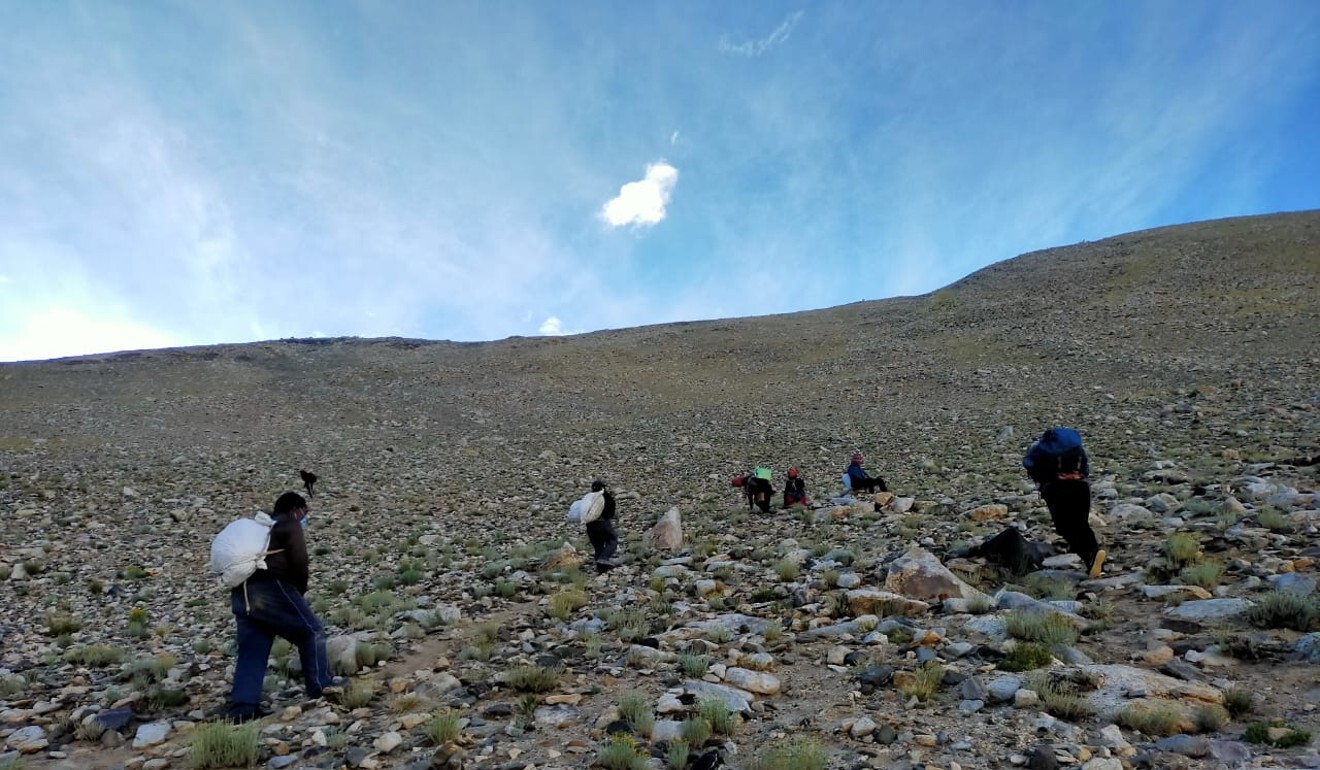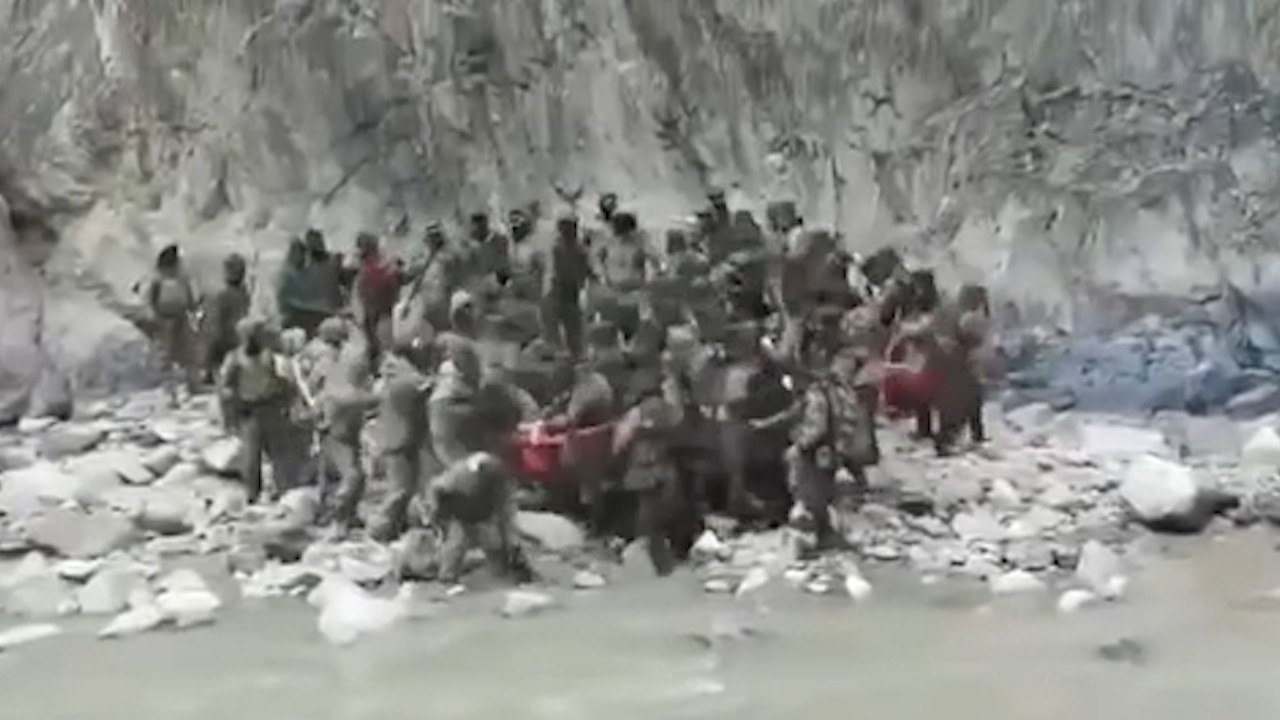
India-China border: Tibetans at Pangong Tso race to help amid warnings military face-off could take ‘any trajectory’
- Families of those who fled after Beijing sent troops into Tibet in 1950 are now helping New Delhi supply its forward bases in the icy heights of Ladakh
- Soldiers from both sides are reportedly in eyeball-to-eyeball proximity as foreign ministers Wang Yi and S. Jaishankar are expected to meet in Moscow
Nawang Dorjay and his family had been looking forward to the summer. The Tibetan Buddhists live in a campsite in Ladakh, where mountain passes mark India’s disputed border with China. Their home overlooks the serene, turquoise waters of the glacial Pangong Tso lake, and they run a cafe further north in Durbuk village – areas that would normally be frequented by hundreds of thousands of tourists at this time of year.
But the family of seven have not seen a single cent’s worth of business this year. To curb the spread of Covid-19, the administration of Prime Minister Narendra Modi instituted a complete lockdown in Ladakh from March 25 to the middle of June. Then, even as the country continued battling the deadly coronavirus, a confrontation between Indian and Chinese soldiers in May sparked a lengthy, unprecedented stand-off that this week escalated into the first exchange of fire along the border in 45 years.
Latest India-China border clash turns spotlight on Tibetan refugees in Special Frontier Force
But instead of fretting about their losses, the 28-year-old and his family are working themselves into a different kind of frenzy.

Dorjay, and others whose families fled Tibet after Beijing sent troops into the region in 1950, now live in the villages of Chushul, Merak and Man Pangong around Pangong Tso. Almost every day, they wake up at 3.30am, trudge to the nearest Indian army base and present themselves as willing volunteers. Their job, he said, was straightforward – help the army get supplies to its forward posts. The tricky part is the journey through inhospitable terrain.
“The trek to these posts can take anywhere between two to three hours, and involves steep climbs,” Dorjay said, adding that four members of his family are volunteers for the Indian army.
Pangong Tso itself is more than 4,000 metres above sea level, and the stand-off between Indian and Chinese forces has been about who can occupy the highest points in the region – some 6,000 metres above sea level, according to estimates by Indian media. This week’s accusations of warning shots follow Indian troops’ efforts late last month to occupy a hilltop New Delhi regards as its territory, with People’s Liberation Army (PLA) soldiers seeking to close in on them.
Stranded Indian expats weigh China return amid Covid-19, border backlash
“Villagers here are poor,” Dorjay said. “We don’t have much to give, so we add some soft drinks from our end for our soldiers.”
These efforts from Ladakh’s Tibetan communities come as more details have recently emerged about the Special Frontier Force, a secret paramilitary unit consisting mainly of Tibetans that is deployed in operations against Chinese troops. One soldier, Tenzin Nyima, lost his life in a landmine blast along the LAC on August 30 and was given a hero’s farewell.

NEW CLASHES, NEW LOWS
Indian news channels on Wednesday began quoting unnamed top government sources as saying the stand-off could take “any trajectory”, adding that at positions like Finger 4 – one of the mountain ridges overlooking Pangong Tso – the armies were “barely a few metres apart”. There were also reports of frequent sorties by Indian fighter jets in Ladakh.
New Tibetan front in India-China border stand-off as five Indians ‘abducted’ in Arunachal Pradesh
Chinese nationalist tabloid Global Times, published by Communist Party mouthpiece People’s Daily, on Wednesday said the PLA was mobilising “forces, including bombers, air defence troops, artillery, armoured vehicles, paratroopers, special forces and infantry units, from different parts of the country to the bordering plateau region”.
On Wednesday, photographs mysteriously appeared in Indian media of Chinese soldiers armed with machetes and automatic rifles, purportedly along the LAC.

03:26
New video shows clash between Indian and Chinese troops on border for first time
“Such psychological operations help in two ways – one is that it allows [either side] to take potshots at their rival, and it allows them to satisfy domestic audiences.”
There is also growing apprehension in New Delhi about Chinese activities in the eastern sector of Arunachal Pradesh. Earlier this week, the PLA admitted that five Indian nationals who went missing from the Nacho region of the state were in their custody, according to Indian sports minister Kiren Rijiju.
India-China border stand-off: military force key to national security, says Modi’s defence chief
An Indian media report pointed to these warnings and said the government was possibly taking note, and that government intelligence had confirmed that China had been making “incursions” into India across not just Arunachal Pradesh but also the neighbouring state of Sikkim.
Corps commanders from both sides are expected to continue talks on the ground in Ladakh, though a date has yet to be finalised. For now, however, officials said progress would depend on the understanding that Wang and Jaishankar reach on Thursday.

